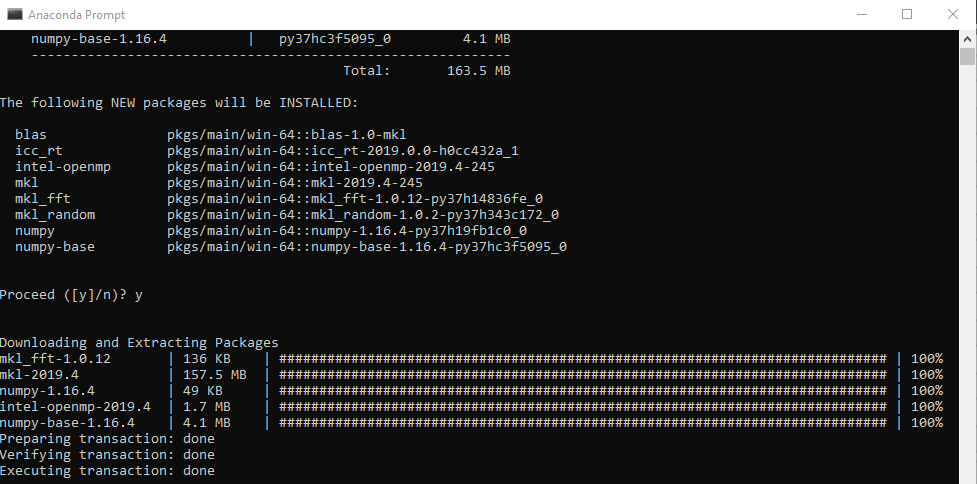

- #Anaconda prompt switch environment install
- #Anaconda prompt switch environment drivers
- #Anaconda prompt switch environment software
This installation process is quite cumbersome, and the difference in software versions can easily put a halt to the whole process.

We can train any object recognition or voice recognition model on this GPU with ease. Ultimately, the GPU is ready for deep learning computations and neural networks. Launch Anaconda prompt from the Anaconda Navigator.įrom the line highlighted above, you will see that all the library files are successfully opened, and the TensorFlow device is created.
#Anaconda prompt switch environment install
Install necessary Python libraries in Anaconda: This software is a must for neural networks and deep learning. This Installation contains crucial library files, without which the TensorFlow environment will not be created and your GPU will not work. This is the NVIDIA CUDA Deep Neural Network(DNN) GPU accelerated library for deep neural networks. Installation screenshots: NVIDIA CUDA Toolkit is installed. Also, read the installation guide for the CUDA Toolkit here. Install the latest version of the Nvidia CUDA Toolkit from here. This software prepares your GPU for deep learning computations. This application is the most significant software that helps your GPU interact with the deep learning programs that you will write in your Anaconda prompt.

During the installation of the Nvidia CUDA software, it will check for any supported versions of Studio code installed on your machine. Installation of the Microsoft visual studio is a necessary step for the installation of the Nvidia CUDA software. Screenshot of Anaconda Navigator after installation:Ĭlick here for the detailed installation documents. Download your Anaconda installation setup from here. It comes with the Jupyter Notebook and Spyder console for Python. Be very careful during the following installation processes: Install AnacondaĪnaconda will be our main coding terminal for this setup of the deep learning environment.

Thus, you cannot go any further if you do not have CUDA cores in your dedicated GPU. The software installation path is a bit finicky, since it is both hardware and software specific.
#Anaconda prompt switch environment drivers
In this article, we will show the detailed process for setting up the deep learning environment using CUDA GPU, Anaconda Jupyter, Keras, and Tensorflow (for windows)Į2E GPU machines provide better performance and cost-efficiency, in comparison to standalone service providers.įor deep learning, the CUDA cores of Nvidia, graphics drivers are preferred in comparison to CPUs, because those cores are specifically designed for tasks like parallel processing, real-time image upscaling, doing petaflops of calculations each second, high-definition video rendering, encoding, decoding.


 0 kommentar(er)
0 kommentar(er)
